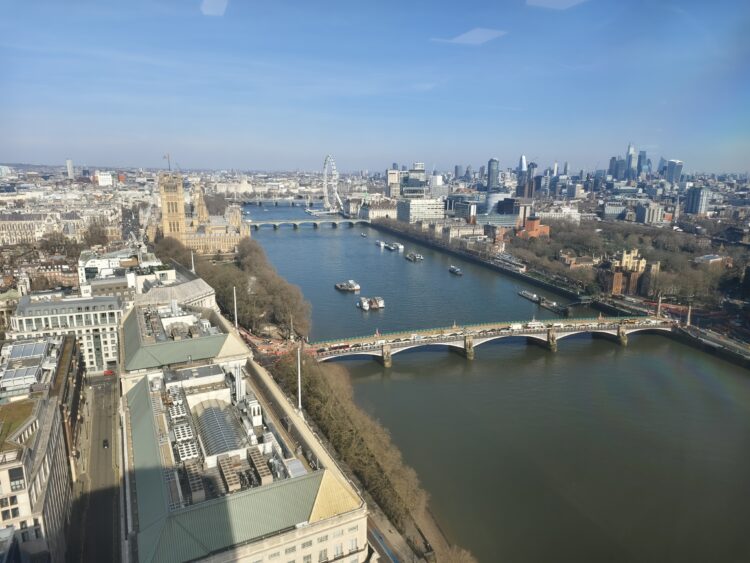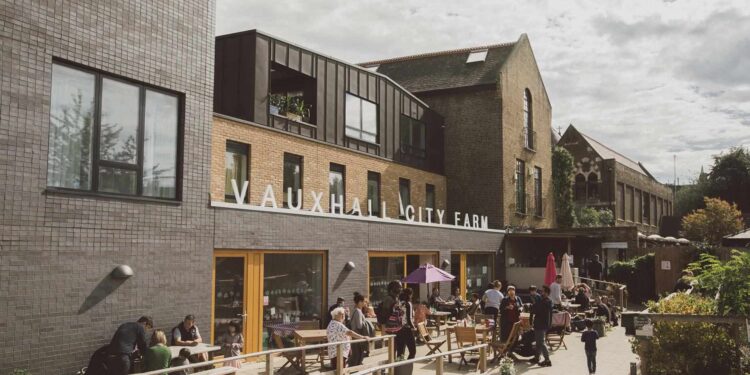London’s Luxury Property Market: Investing in High-End Real Estate
London’s luxury property market stands as a distinct and often resilient segment of the global real estate landscape. Far from the everyday buy-to-let, this niche caters to Ultra High Net Worth (UHNW) individuals, family offices, and discerning investors who seek more than just rental income – they seek wealth preservation, a trophy asset, and a piece of one of the world’s most stable and appealing cities. In 2025/2026, understanding the unique dynamics of London’s prime and super-prime real estate is crucial for those looking to invest at the very top end.
This in-depth guide will delve into what defines London’s luxury property market, explore its current trends, key investment drivers, associated costs, and crucial considerations for attracting and managing high-net-worth tenants.
1. Defining London’s Luxury Property Market
The terms “prime” and “super-prime” refer to the most expensive and desirable properties, typically in specific prestigious locations.
- Prime Property: Generally encompasses properties valued from £1 million upwards, often found in desirable parts of Prime Central London (PCL) and Outer Prime London (POL).
- Super-Prime Property: This is the pinnacle – typically properties valued at £10 million and above, representing the top 5% by value (and the very top 1% being “ultra-prime”). Transactions at £25 million, £50 million, or even £100 million-plus are not unheard of in this exclusive tier.
Key Luxury Areas:
The heart of London’s luxury market is Prime Central London (PCL), including:
- Mayfair (W1)
- Knightsbridge (SW1X)
- Belgravia (SW1X)
- Chelsea (SW3)
- Kensington (W8)
- Notting Hill (W11)
- St John’s Wood (NW8)
Other affluent areas like Hampstead (NW3), Richmond (TW9/TW10), and Wimbledon (SW19) also host significant luxury properties, particularly larger family homes.
What Defines a Luxury Property?
Beyond the price tag, luxury properties are characterised by:
- Rarity & Prestige: Often unique, architecturally significant, or located in highly exclusive addresses with limited supply.
- Exceptional Design & Finishes: Bespoke interiors crafted with the finest materials, state-of-the-art technology (smart home systems, advanced security), and exquisite attention to detail.
- Unmatched Amenities: Private cinemas, gyms, swimming pools, wine cellars, spas, and even car lifts. Many luxury developments also offer 24/7 concierge, private gardens, and valet parking.
- Turnkey Readiness: A growing demand for properties that are ready to move into without requiring extensive refurbishment.
- Privacy & Security: Paramount for UHNW individuals, often featuring gated access, discreet on-site teams, and advanced surveillance systems.
2. Market Trends and Outlook (2025/2026)
After a period of economic adjustments and tax changes, London’s prime market is showing signs of renewed confidence.
- Resurgence & Stabilisation: Following a period where prices softened (especially in PCL), early 2025 indicates a rebound and stabilisation. Kensington & Chelsea, for example, saw positive movement.
- Modest Price Growth: While not expecting a boom, forecasts suggest modest price growth in PCL (e.g., flat to +1.1% for Prime Outer London in 2025), with cumulative growth of nearly 10% over the next five years.
- Increased Activity: Transaction volumes increased steadily in early 2025, driven by a growing pool of buyers.
- Higher Inventory: More properties are available for sale, offering buyers more choice. However, sellers are often holding out for 2021 prices, leading to some negotiation room (e.g., 12.5-15% typical discount in Mayfair/Knightsbridge). High-quality, realistically priced homes are selling well.
- New Builds vs. Resale: New builds account for a growing proportion of prime London sales (a third), favoured for their modern amenities and security.
Action Point: Patience and astute negotiation are key. While there’s more stock, the best deals are secured by buyers who act decisively on realistically priced assets.
3. Key Drivers for Luxury Property Investment
Investing in London’s high-end real estate is driven by a unique set of factors:
- Safe Haven & Wealth Preservation: Prime London property is globally recognised as a stable, long-term store of wealth, particularly attractive during geopolitical or economic uncertainties. It acts as a tangible, secure asset.
- Global City Status: London’s enduring appeal as a leading financial, cultural, and educational hub continues to attract wealthy individuals from around the world.
- International Demand: Buyers from the US, Middle East, Asia, and Latin America remain a significant force, often benefiting from favourable currency exchange rates (e.g., a strong US dollar against the pound).
- Lifestyle & Education: Access to world-class amenities, private schooling, healthcare, and a vibrant cultural scene is a powerful draw for UHNW families.
- Long-Term Appreciation: Despite short-term fluctuations, London’s scarcity of prime locations and consistent demand underpins long-term capital appreciation.
- Return to Office: A push for more in-office working is driving renewed demand for centrally located smaller properties and flats among professionals.
4. Rental Market in the Luxury Segment
While rental yields in Prime Central London are typically lower (ranging from 2.5% to 3.5%) compared to mainstream or outer London buy-to-let (which can reach 5-7%+), they offer specific advantages.
- Stability: High-net-worth tenants often seek long-term, stable tenancies, providing predictable income.
- Strong Demand: Supply shortages continue to drive achieved rental values upwards in PCL.
- Executive & Corporate Lets: A niche market of corporate clients and expatriates seeking high-quality, fully managed, and often serviced accommodation.
Action Point: Understand that luxury property is less about high immediate yield and more about capital preservation, appreciation, and a diversified portfolio strategy.
5. Challenges and Considerations for Investors
Investing in London’s luxury market comes with its own set of complexities:
- High Transaction Costs:
- SDLT Surcharge: All additional residential properties are subject to a 3% SDLT surcharge, meaning the rates for luxury properties over £1.5 million can be as high as 17% of the portion of the value.
- Non-UK Resident Surcharge: An additional 2% SDLT applies to non-UK resident buyers, potentially pushing the top rate to 19% on the portion over £1.5 million.
- Abolition of Multiple Dwellings Relief (MDR): Since June 1, 2024, acquiring multiple luxury units in a single transaction no longer benefits from MDR, significantly increasing the SDLT payable.
- Tax & Regulatory Changes: Changes to non-domicile tax rules (from April 2025) and potential shifts in government policy can influence investment decisions and capital flows from UHNW individuals. While some reassessment is ongoing, a mass exodus is not widely predicted.
- Slower Liquidity: While prime property is generally liquid, transactions can take longer than in mainstream markets, and finding the right buyer may require patience.
- Sourcing Properties: Many of the most desirable super-prime properties are sold “off-market” for privacy and discretion, requiring access to exclusive agent networks.
- Maintenance & Management: Luxury properties demand impeccable, proactive maintenance and highly specialised management services.
6. Managing Your Luxury London Property Investment
Attracting and retaining high-net-worth tenants, and preserving the value of a luxury asset, requires a specialist approach:
- Impeccable Condition: Properties must be kept in pristine, “turnkey” condition. Regular, proactive maintenance is essential.
- High-End Management: Engage specialist luxury property management companies. They offer services like 24/7 concierge, bespoke maintenance, security, and financial oversight, understanding the unique needs of UHNW owners.
- Privacy & Discretion: These are paramount. Ensure your property management adheres to strict privacy protocols for tenants.
- Bespoke Services: Be prepared to offer personalised services or accommodate specific high-end requirements.
Investing in London’s luxury property market offers a unique blend of prestige, capital preservation, and long-term appreciation. While it demands significant capital and navigating complex regulations, for investors with a strategic vision and the right professional support, it remains a compelling and enduring asset class within the global real estate landscape.
















